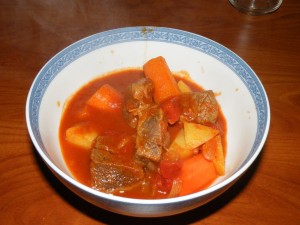 the Travel Enthusiast
the Travel Enthusiast
- 22 Mar
lizzy_a in Food Experiences | 2 COMMENTSA short guide to Hungarian cuisine
Every country in Eastern and Central Europe has some special about its cuisine, and although sometimes it can be difficult to pinpoint where a particular dish came from, there are a few foods that are emblematic of their countries. Hungary might be a small country, but its cultural heritage, as well as its cuisine, are not to be neglected.
Nowadays, you can find traditional Hungarian restaurants and bakeries in most big cities, so here’s a short guide to Hungarian cuisine so that you’ll know what to order if you decide to try it out.
What to expect
Hungarians passionately love their soups and desserts, and many of the cuisine’s staples can be found all over the country but with subtle variations (and sometimes radical differences), according to what produce can be found locally. Two of the most distinctive dishes of the Hungarian Cuisine are the stews, which can come in many styles, shapes and sizes, and cold fruit soups.
Another feature of Hungarian food is the use of different types of meats in the same dish, like in the case of the famous goulash soup, or stuffed peppers. The food is often very spices, because paprika is very popular in Hungary, and onions and garlic are also commonly used to season dishes.
Soups
There is a huge variety of soup in Hungarian cuisine, and a traditional meal will seldom be served without a soup course. Goulash soup is one of the most well known Hungarian soups, but it can also be prepared as a stew. It typically contains potatoes, meat, peppers and onions, and it’s traditionally cooked in a cauldron.
Fish soup is another great favorite, and depending on which side of the Danube you are, the recipe will be completely different. The soup is very spicy and filling, and the cauldron cooked variety is the best. If you haven’t tried cold fruit soups yet, have a taste of cold sour cherry soup, which is eaten as a main course or an appetizer, not as dessert. It contains sour cream, sugar, and whole fresh sour cherries.
- Flights
- Hotels
- Packages
- Cars
- Cruises
travel search by Travelgrove (get this widget)Main courses
Main courses in Hungarian cuisine are so varied that it’s hard to keep count of them, but on the bright side, it’s impossible not to find something that appeals to you. Try the stuffed cabbage, a widespread dish in Eastern Europe,
and the stuffed peppers, the same stuffing in a different vegetable. For a simple but tasty dish, try the noodles with quark cheese called túró, served savoury with bacon or sweet.
For the grand finale, don’t forget to order dessert. Pancakes are very common in Hungarian cuisine, and they are very similar to the French crepes.
They are served with a variety of toppings (jam, cheese, chocolate), but they also come in fancy forms like the Gundel pancake, stuffed with walnuts and served in chocolate sauce, often flambéed.
You might also like
Pingbacks and Trackbacks on A short guide to Hungarian cuisine
The most delicious recipes of the Hungarian cuisine | Hungary Wanderer wrote on August 30, 2011:[…] widely depending on region, but it always contains beef, potatoes, carrots, peppers and paprika.Hungarian cuisine is full of tasty dishes, but they are also quite heavy and spicy, so just carefully, do not […]
Comments on A short guide to Hungarian cuisine
Enter your comment below, or trackback from your own blog. You can also subscribe to these comments via RSS
 Leave a comment:
Leave a comment:





I particularily like the pan cakes as well as slow cooked tripe with sweet peppers.